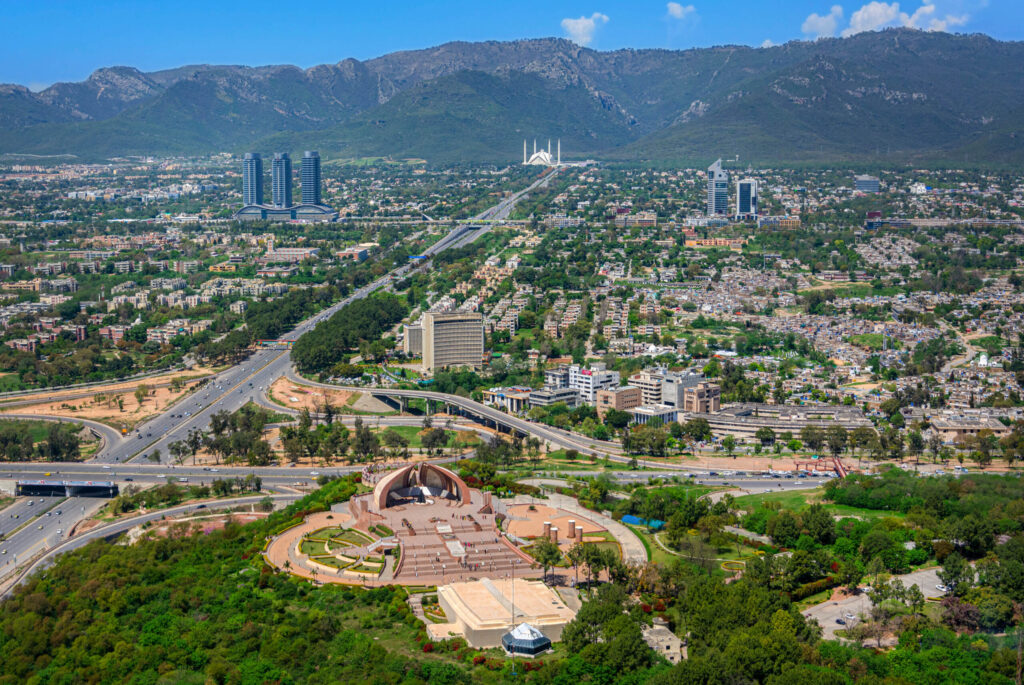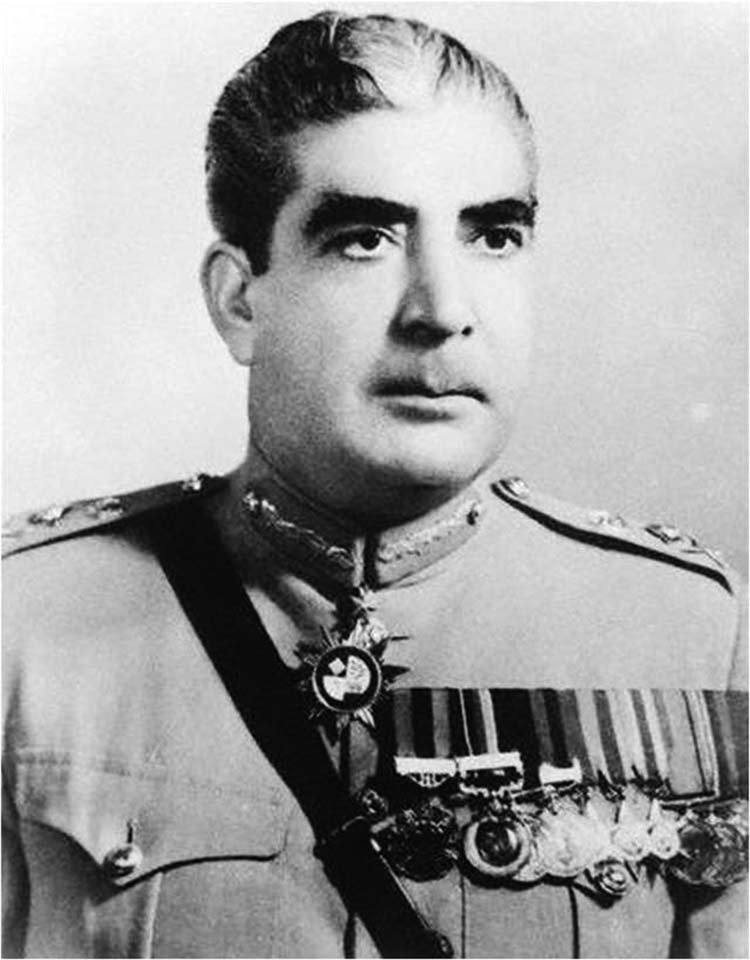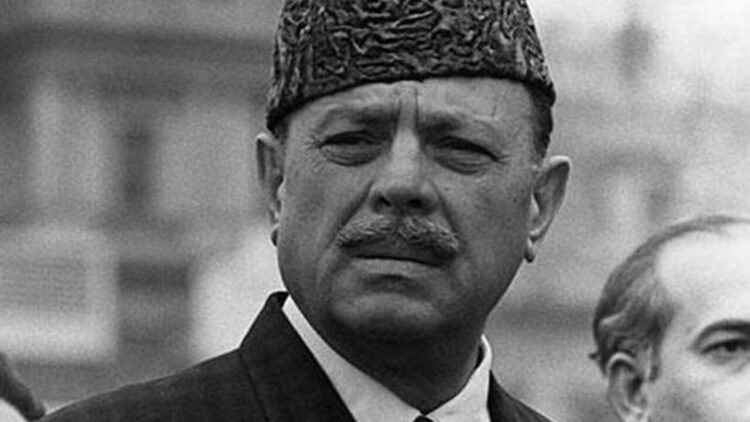This series will cover the history of Modern Pakistan, from the earliest notions of a separatist Muslim governance to the creation of Pakistan and all the way to 2023.
You can read post covering 1857 – 1927 here: A History of Modern Pakistan #1 1857 – 1927
You can read post covering 1927- 1939 here: A History of Modern Pakistan #2 1927 – 1939
You can read post covering 1939 – 1947 here: A History of Modern Pakistan #3 1939 – 1947
You can read post covering 1947 – 1953 here: A History of Modern Pakistan #4 1947 – 1953
You can read post covering 1953 – 1958 here: A History of Modern Pakistan #5 1953 – 1958
1958 – 1970
General Ayub Khan as President
General Ayub served in the military for most of his life, but then became politically active, he started off as defence and home minister and eventually in 1958 whilst army commander in chief became president.
He made relations with the US, allowing them to use Pakistani bases to spy on the Soviets and Chinese. In return, he managed to secure foreign aid and investment.
General Ayub introduced many reforms to Pakistan. He drew up a new plan to kick start the country and forget the last ten years of mess and instability.
Two years later in 1960, as promised, a referendum was held to the public, “Do you have confidence in Muhammad Ayub Khan?” He received an overwhelming vote of “Yes”, thus giving him mandate to formalise a new presidential system and becoming president for the next five years.

Second Five-Year Plans (1960–1965)
President Ayub worked on a solid five-year plan with the single underlying purpose “to advance the country as far as possible, within the next five years, along the road of these long-range objectives.”
In agriculture, maximum piece of land one could own was 1000 acres. This was to prevent monopolies and hoarding of land and encourage more agricultural growth. He believed in supporting businesses to thrive, they would in return increase employment and create circular economy. Many now say, these families became millionaires without fairly giving back to the country and people.
In terms of social rights, peasants and minorities had an increase in rights. Marriage registration became mandatory, triple talaq was banned and an arbitration council set up.
In terms of industry and technology, he privatised state-owned industries letting the businessmen grow them. He began building hydroelectric stations, dams, and reservoirs. Pakistan’s space program was established, and the country launched its first un-crewed space-mission by 1962.
There was also improvement to literature, film, music, science, railways, energy, communications and transportation. As the country became more industrialised, unemployment dropped. By the end, the Five-Year Plan surpassed its major goals when all sectors showed substantial growth which also encouraged private entrepreneurs and external investors to invest into the country even further.
1960 Islamabad created
In 1960 Islamabad the new capital of Pakistan was created. It was particularly chosen for its location, climate, logistical and defence benefits as well as being closer to Kashmir.
Karachi, the existing capital was too coastal and open to attack, as the army base was in Rawalpindi. It was also the business capital and the government wanted to remain independent from business tycoon influence.

1962 Constitution
After Mirza abrogated the constitution in 1958, Ayub appointed a commission to come up with a new constitution. It was approved in 1962 and later that year came in to effect. The key features were:
- Federal System
- A written and detailed constitution that can be adopted by any future government
- Pakistan shall be an Islamic republic under the name of Islamic Republic of Pakistan.
- Islamic law was to be implemented where possible. Laws should conform to Qur’an and Sunnah.
- US-type presidential system was enforced to overcome political instability and establish a firm socio-economic and political order. All the executive authority was vested in the President who was unanimously responsible for the business of the central government. All the ministers were appointed by him and they were accountable to him alone. The president also enjoyed certain legislative, military and judicial powers.
- Unicameral Legislature: National Assembly with a 5-year term
- Indirect BD Election: The Public were not educated enough to select a president. Instead, they would elect the Basic Democrats who would elect the President.
- Independence of Judiciary and powers over legislature and executive.
- Fundamental Rights
- Provincial Assembly
- Facilitate Muslims to practise their religion taking into account deeper principles and concepts.
- Only a Muslim could be qualified for the election as president.
- Teaching of the Quran and Islamiyah to the Muslims of Pakistan was made compulsory.
- Proper organization of Zakat, waqf, and mosques was ensured.
- Practical steps were to be taken to eradicate what were seen as social evils by Islam, such as the use of alcohol, gambling, etc.
- Islamic Research Institute: assisting in the reconstruction of Muslim society on a truly Islamic basis.
- Endeavour to strengthen the bonds of unity among Muslim countries.
1965 Elections
In 1965, as the presidential elections came, Ayub entered the presidential race as the Pakistan Muslim League (PML) candidate to counter the famed Fatima Jinnah of the Combined Opposition Party (COP). The nine-point program put forward by the COP emphasized the restoration of parliamentary democracy. Ayub Khan won 63.3% of the Electoral College vote. Ayub remained as president, but he faced allegations of widespread vote riggings and political murders. The federal capital was also relocated Islamabad.
1965 War with India
In 1965, Pakistan went to war with India, however, with Soviet Union intervention in 1966 (Tashkent Declaration) peace was negotiated and relations among the three nations improved. As a result though Pakistan’s relations with the US deteriorated.
Third Five-Year Plans (1965–1970)
The level of foreign assistance declined and economic constraints were imposed on Pakistan. The third five-year plan focused on promoting domestic growth with private sector investment which will lead to greater exports and employment. By 1970, much of the country had become urbanised.
Six-Points of Sheikh Mujib-ur-Rehman
Sheikh Mujib-ur-Rehman along with Suhrawardy stood for Bengali rights and as Pakistan was establishing itself further for the people of west Pakistan, he staunchly presented a Six-Point formula in 1966:
- Federal parliamentary system with representation based on provincial population
- Federal government will be restricted only to foreign affairs, defence and currency, except economic issues which the provinces will administer
- Two currencies for either wing or single currency with two federal reserves.
- Provinces will collect taxes and then give shares to federal government for administration, foreign affairs and defence.
- There would be separate accounts of foreign exchange earnings for each wing.
- East Pakistan would be entitled to have militia or paramilitary force solely under its jurisdiction.
Sheikh Mujib was essentially looking after the Bengalis. If they prosper then they didn’t want west Pakistan to take credit or control their income.
End of the Ayub Era
Due to income inequality, Pakistan became a country with extreme wealth and extreme poverty. Ayub Khan’s policies nourished the capitalist class, whose fortunes amassed, but it oppressed ordinary people with increasing material poverty, as well as intellectual poverty due to rigorous political and cultural censorship.
In 1967, wide disapproval of price hikes of food prompted demonstrations across the country led by Zulfikar Ali Bhutto. Zulfikar Ali Bhutto formed the socialist Pakistan People’s Party (PPP) and embarked on a nationwide tour where he attacked the Ayub administration’s economic, religious, and social policies.
Differences between West and East Pakistan arose to an enormous degree, and with many protests, he was forced to resign in March 1969. Ayub by now was also falling ill so appointed General Yahya Khan as his successor to oversee elections.
Ayub’s presidency is often dubbed the “Decade of Development”. He is credited with economic prosperity and industrialisation but on the other hand a president who neglected Bangladesh, which led to the Bangladesh Liberation War. The failure of better land reforms and a weak taxation system meant that most growth landed in the hands of the elite and not back to the government. He led the country of Pakistan for 11 years.
General Yahya Khan as President
General Yahya repealed the 1962 constitution and came up with a Legal Framework ordinance so free and fair elections could take place as well as a new constitution to be in place.
The One Unit programme was disestablished, which had formed West Pakistan, re-establishing the four provinces of Punjab, Sindh, Baluchistan and the Northwest Frontier Province Instead. Pakistan would be a democratic country and the complete name of the country would be the Islamic Republic of Pakistan.

